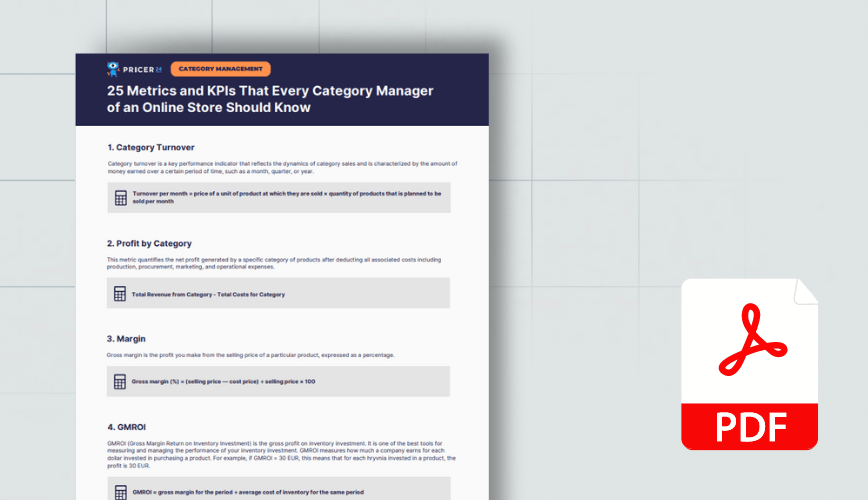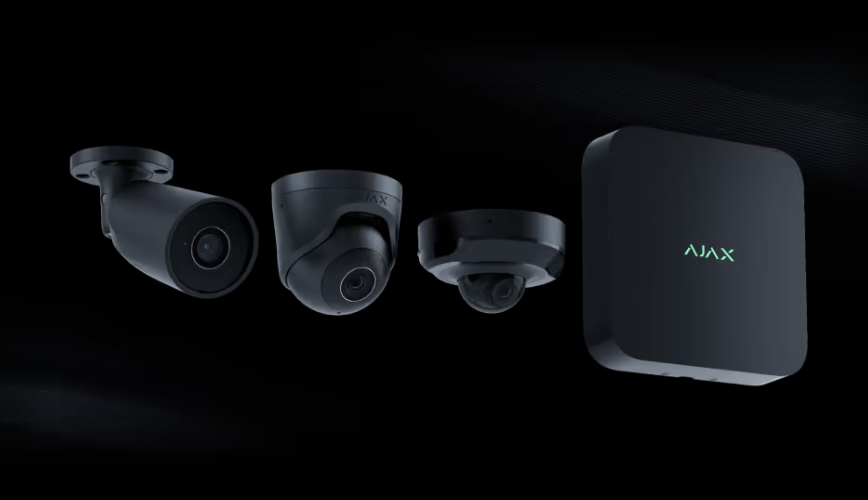It may seem there is only one scenario in which a company can raise prices without losing customers: when there is no competition. But we have good news: there are strategies that can help you maintain customer loyalty even when prices increase.
Before we discuss these strategies, it’s important to identify why companies raise prices.
Contents:
Reasons for Increasing Prices
How to Recognize When to Raise Prices
How Price Increases Impact Customers
Preparing for a Price Increase: Key Steps to Consider
7 Ideas for Increasing Prices Without Losing Customers
Reasons for Increasing Prices
Raising prices is a complex decision for any business, and it directly affects competitiveness. However, price increases are often inevitable to preserve a company’s stability. Let’s explore key reasons why businesses may need to raise their prices.
Increase in Operating Expenses
One of the primary reasons for price increases is the rising cost of goods production. The world is still grappling with persistently high inflation, which is expected to last until 2025 before returning to pre-pandemic levels. This results in higher costs for energy, raw materials, and logistics. Companies must compensate for these expenses to maintain profitability. In this context, price increases become necessary for sustaining the business.
Need for Greater Profitability to Fuel Innovation
Innovation is often synonymous with market leadership. Companies that continually enhance their production processes, adopt new technologies, and develop competitive advantages can increase their market share, achieve higher profit margins, and solidify their market positions.
However, innovation requires investment. Thus, demand for innovation creates a need for greater profitability, prompting companies to raise prices to achieve the necessary profit to invest in development of new products.
Changes in Demand and Market Conditions
Consumer preferences can shift rapidly, leading to changes in demand for specific products. Business owners who recognize these shifts can adjust prices to maximize profits. For instance, during the COVID-19 pandemic, many retailers raised prices for essential goods such as masks and sanitizers due to heightened demand.
Additionally, supply chain disruptions can affect pricing. For example, if production is hindered by shortages of raw materials, this can alter a product’s availability and pricing structure. A classic example is the agricultural sector, where prices for agricultural products can spike as a result of poor crop yields.
All of these price adjustments are natural responses to economic conditions. But how can you identify the right moment to raise prices? Let’s examine the key signals that indicate it may be time to make this decision.
How to Recognize When to Raise Prices
Companies are often unprepared for price increases, which can negatively affect their sales and customer base. Here are several indicators that signal the need for a price change:
- Decreasing Profit Margins
As your expenses rise and profits decline, maintaining current pricing may become unprofitable. If you notice a decrease in your profit margins, it’s a strong indication that you may need to adjust your prices.
- Price Increases by Competitors
If you observe that your competitors are raising their prices, they may be making strategic adjustments that could affect your business. Regularly analyzing competitors’ pricing strategies will help you identify the optimal timing and extent of your own price increases to avoid losing customers.
How Price Increases Impact Customers
Price increases can heighten price sensitivity among consumers. During inflationary periods, individuals become more cautious about their spending and tend to scrutinize what they are paying for and adjust their purchasing behavior accordingly. The current digital landscape has only made such scrutiny easier.
As a result, price increases can lead to shifts in sales volumes. Price-sensitive customers may reduce their purchasing frequency or become more motivated to seek alternatives.
Loss of loyal customers and changes in sales patterns can harm a company’s financial health. It is crucial to prepare adequately before implementing price increases in order to mitigate these risks.
Preparing for a Price Increase: Key Steps to Consider
Competitor Analysis
The first step in preparing for a price increase is to conduct thorough market research and analyze competitors’ pricing. Understanding how your prices compare to those of your competitors is critical.
If you operate in the e-commerce sector, Pricer24 can assist you with monitoring competitors’ prices. For more information on competitive pricing analysis, refer to E-commerce Pricing: How to Scale and Grow.
ABC/XYZ Product Analysis
This method helps you identify products that are likely to contribute the most to your company’s revenue. By classifying products based on their importance to your business and their stability of demand for them, you can determine which products deserve special consideration during price increases.
To learn more about this product analysis method and find recommendations, consult our guide on ABC/XYZ analysis.
Price Elasticity Analysis
Understanding the price elasticity of demand is another crucial preparatory step. Price elasticity analysis helps determine how changes in price affect sales. Since demand can be elastic, even slight price increases may lead to significant changes in sales, making it essential to approach such changes carefully.
You can find more information about price elasticity analysis in our article Price Elasticity of Demand: Formula and Definition.
Price Sensitivity Analysis
Conducting price sensitivity analysis can provide insights into how your customers respond to price changes. This analysis takes into account customer history, experiences, and preferences. By managing prices thoughtfully, you can adapt your pricing strategy and mitigate the risk of losing customers.
Discover how to conduct price sensitivity analysis using the Peter Van Westendorp method here.
Preparation for Client Communication
Effective communication can help reduce the negative impact of price increases. Prepare a notification in advance that clearly explains the reasons for the price increase and outlines any new advantages or benefits for customers.
7 Ideas for Increasing Prices Without Losing Customers
There are several strategies that can help you increase prices while maintaining customer loyalty:
1. Implement Gradual Price Increases
Adjust your prices incrementally to avoid shocking customers. This approach allows both you and your clients to adapt. Instead of implementing a large price increase all at once, consider making smaller, gradual changes.
2. Choose the Right Timing
The ideal time to raise prices is when you are confident that customers are satisfied with your product or service. Aim to make changes during quieter periods when customer sentiment is stable.
3. Adjust Sizes
Many restaurants use this tactic: keep prices the same or slightly change portion sizes so that customers don’t notice. You can apply this strategy to various products. For instance, if a set of six toy cars costs $30 and you want to raise the price to $35, consider creating a new option with three cars for $18 or single cars for $7 along with offering the set of six at the new price.
4. Segment Your Assortment and Customers
Increase prices selectively on specific items that significantly impact revenue while keeping prices unchanged on others. Additionally, research which of your customers are most price-sensitive and offer different price tiers for different products. This allows you to retain the loyalty of price-sensitive customers by providing lower-priced alternatives within your product range.
If you need to implement a substantial price increase, consider targeting a new, wealthier customer base. Even with a modest increase, expanding your target audience to consumers with larger budgets can help offset potential sales losses.
5. Promote Discounts to Offset Price Increases
To maintain the loyalty of regular customers after a price increase, promote discounts to make customers feel valued. More forgiving customers may tolerate the higher prices, while less forgiving ones may require these discounts to stay loyal.
6. Introduce a Loyalty Program
A loyalty program can be an effective tool for retaining customers during price increases. Encourage repeat purchases by offering bonuses or discounts that compensate for the increased prices.
7. Provide Added Value
Customers are more likely to accept price changes when they perceive they are receiving more for their money. To justify a price increase, consider the following ways to add value to your products or services:
- Increase Product Quality: Customers are more likely to accept a price increase if it comes with improved quality. For example, you might use better raw materials or introduce new features that enhance the product’s utility and durability.
- Expand Services: Improve the customer experience by adding complementary services such as extended warranties, technical support, or personalized advice that increase the overall product value.
- Introduce Bundle Pricing: Offer product or service bundles that create a sense of value for customers. For instance, bundles containing multiple products or additional accessories can help soften the perception of a price increase.
It’s important to recognize that you may not be able to please all of your customers, and some may be upset by price increases. Be mindful of the feedback customers leave on your website or social media and be prepared to adjust your pricing strategy as necessary.
Conclusion
Raising prices is often a necessary step to ensure business profitability. By adopting the right approach, communicating transparently, and prioritizing customer needs, you can minimize risks and maintain customer loyalty. A well-balanced pricing strategy that responds to market demands while adding value for customers will empower your business to continue growing.









